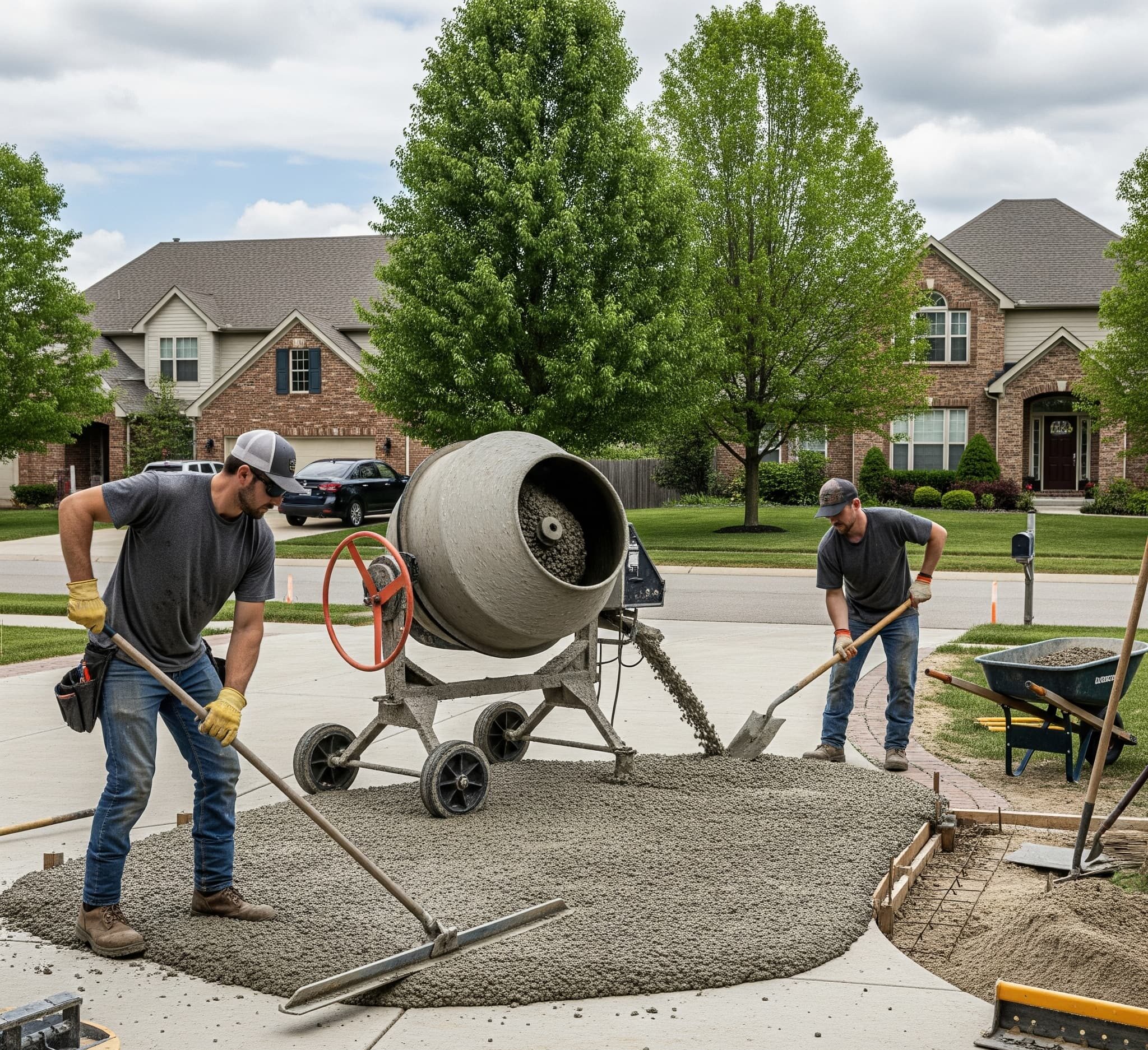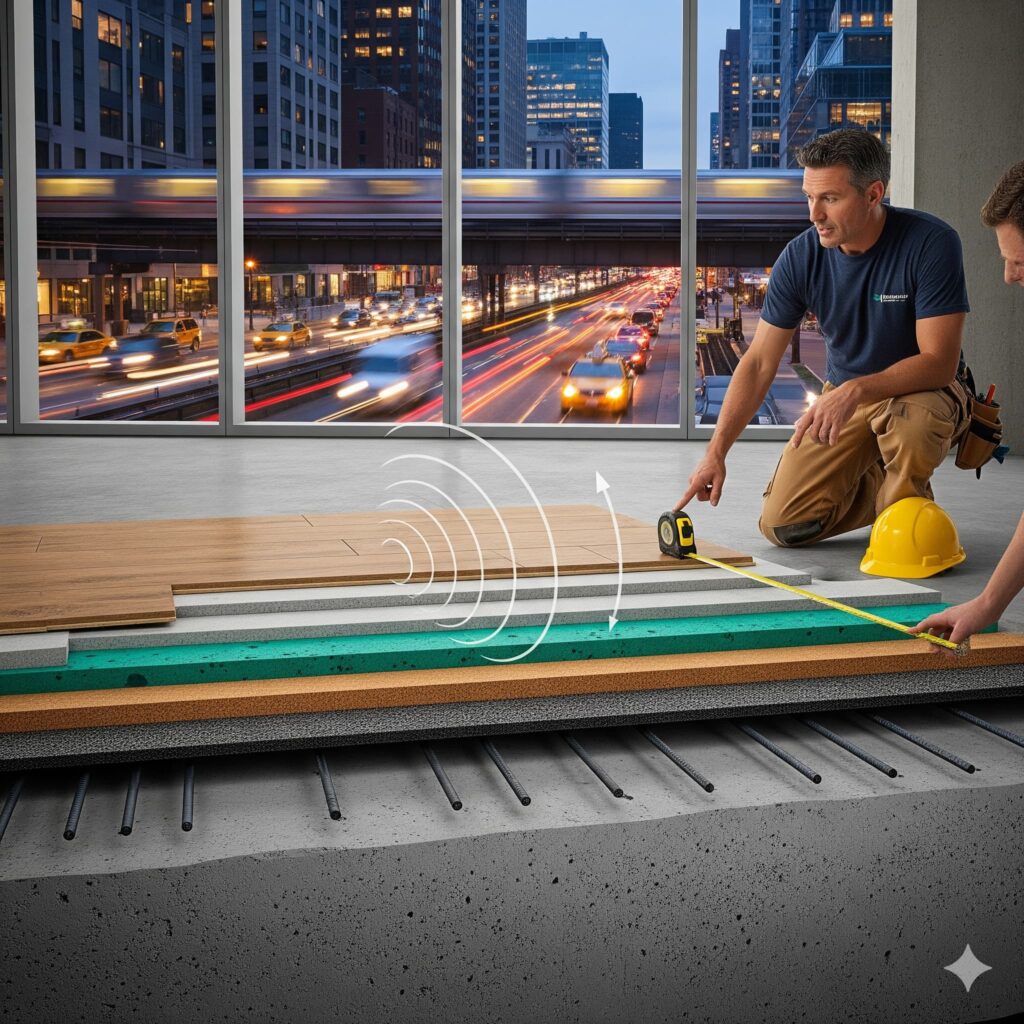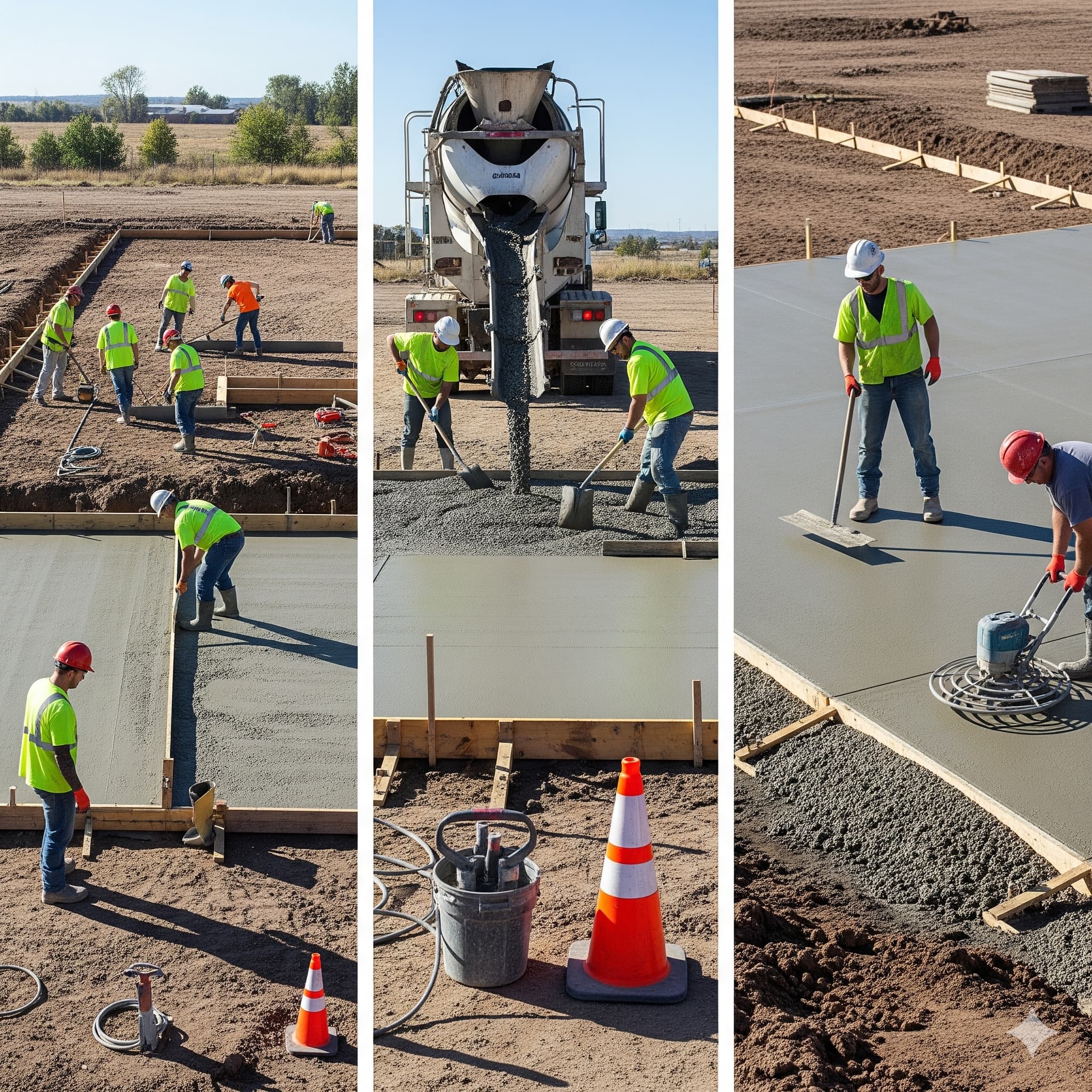
Soundproofing Tips for Concrete Flooring in Urban New Haven
Concrete Flooring
Urban living near busy transportation hubs like Union Station and State Street Station creates significant noise challenges that require specialized soundproofing solutions for concrete flooring systems. New Haven residents in downtown areas along Chapel Street and State Street experience elevated noise levels from train traffic, street activity, and neighboring units that can dramatically impact quality of life without proper acoustic treatment.

Understanding Urban Noise Sources
Urban concrete flooring faces multiple noise transmission challenges, including airborne sounds from traffic and nearby activities, plus impact noise from footsteps and dropped objects that propagate through rigid concrete structures. Properties near major rail lines experience low-frequency vibrations that can cause rebar within concrete to resonate, amplifying structural noise transmission throughout building systems.
Impact Noise Transmission
Concrete’s inherent rigidity transforms every footstep into audible impact noise that travels through structural connections to adjacent units and floors below. Standard concrete slabs typically achieve Impact Insulation Class ratings between 25-32, falling well below comfortable acoustic standards for urban residential environments. We address these deficiencies through specialized underlayment systems that intercept vibrations before they enter structural elements.
Airborne Sound Penetration
While concrete provides excellent mass for blocking airborne noise, gaps around perimeter edges, penetrations for utilities, and structural connections create acoustic weak points that compromise overall performance. Traffic noise from Interstate 95 and the Oak Street Connector can penetrate these vulnerabilities, requiring comprehensive sealing and isolation strategies for effective control.
High-Performance Acoustic Underlayments
Professional-grade acoustic underlayments create essential isolation layers between concrete subflooring and finish floor materials to dramatically reduce both impact and airborne noise transmission. Modern rubber and polymer systems achieve Delta IIC ratings of 22-25 decibels, transforming noisy concrete surfaces into acoustically comfortable living spaces.
Dense Rubber Underlayment Systems
High-density rubber underlayments provide superior sound damping through specialized polymer formulations that absorb impact energy while maintaining structural integrity under heavy loads. These systems work particularly well for properties near the downtown business district, where both pedestrian and vehicular traffic create continuous noise challenges. Installation requires precise attention to joint sealing and perimeter isolation to prevent acoustic bridging.
Multi-Layer Isolation Platforms
Advanced floating floor systems incorporate multiple acoustic layers, including mass-loaded vinyl barriers, resilient foam cores, and decoupling membranes that address both impact and airborne noise simultaneously. These comprehensive solutions excel in challenging environments near transportation infrastructure where multiple noise sources require broad-spectrum acoustic control.
Mass-Loaded Vinyl Barriers
Mass-loaded vinyl provides exceptional airborne noise blocking capabilities through dense, flexible membranes that add acoustic mass without significant height increases. These specialized materials contain high-density mineral fillers that effectively block sound transmission while remaining thin enough for renovation applications in existing buildings.
Installation Techniques for Maximum Effectiveness
Proper MLV installation requires continuous coverage without gaps or punctures that could compromise acoustic performance. Seams must overlap and seal completely while avoiding mechanical connections that could create acoustic bridges to structural elements. Properties near State Street Station benefit from MLV applications that address both rail noise and urban traffic sounds.
Integration with Existing Floor Systems
MLV barriers integrate seamlessly with various flooring materials, including hardwood, laminate, tile, and carpet systems, without affecting installation procedures or finish appearance. The flexible material accommodates building movement and thermal expansion while maintaining acoustic integrity over extended service periods.
Specialized Acoustic Mats and Carpeting
Acoustic carpet systems and specialized mats provide both comfort and sound absorption for concrete flooring applications where hard surface finishes might amplify noise problems. These solutions work particularly well in residential settings where walking comfort combines with acoustic performance requirements.
High-Density Acoustic Carpet Pads
Professional-grade carpet padding designed for acoustic applications provides significantly better sound absorption than standard residential padding materials. These specialized products reduce both impact noise transmission and improve room acoustics by controlling sound reflection and reverberation common in hard-surfaced urban environments.
Modular Acoustic Mat Systems
Interlocking acoustic mats offer flexible solutions for areas requiring temporary or adjustable sound control while maintaining easy access to concrete surfaces for maintenance or utilities. These systems work well for basement workshops, exercise areas, or multipurpose spaces where acoustic needs may change over time.
Perimeter Isolation and Gap Sealing
Comprehensive acoustic treatment requires careful attention to perimeter details where flooring systems meet walls, columns, and penetrations through concrete slabs. Even small gaps can significantly compromise acoustic performance by allowing flanking transmission around carefully designed isolation systems.
Acoustic Caulk and Sealant Applications
Specialized acoustic sealants maintain flexibility while providing excellent sound blocking capabilities for gaps around flooring perimeters and utility penetrations. These materials remain effective through building movement cycles while preventing acoustic short-circuits that could undermine expensive soundproofing investments.
Expansion Joint Management
Concrete expansion joints require special acoustic treatment to maintain sound isolation while accommodating structural movement. Professional installation techniques use resilient materials that compress and expand with concrete movement while maintaining acoustic seal integrity.
Door and Transition Area Treatment
Doorways and transitions between different flooring systems create potential acoustic weak points that require specialized treatment to maintain overall soundproofing effectiveness. These areas often experience high traffic loads while needing to preserve acoustic isolation between spaces.
Acoustic Door Sweeps and Seals
High-performance door seals and sweeps control noise transmission through gaps under doors and around frames without affecting door operation or creating maintenance issues. These systems work particularly well for controlling hallway noise in multi-unit buildings common throughout downtown New Haven.
Threshold Acoustic Design
Transition areas between acoustically treated floors and adjacent spaces require careful design to maintain sound isolation while providing smooth, safe pedestrian traffic flow. Professional installation techniques ensure acoustic continuity across these critical interfaces.
Professional Installation Considerations
Successful acoustic treatment of concrete flooring requires specialized knowledge of sound transmission principles, material compatibility, and installation techniques that maximize performance while ensuring long-term durability. Professional installation prevents common mistakes that could compromise acoustic effectiveness or create maintenance problems.
Surface Preparation Requirements
Proper surface preparation ensures optimal bonding and performance of acoustic materials while addressing existing concrete defects that could affect installation quality. This includes crack repair, surface leveling, moisture testing, and contamination removal to create ideal conditions for acoustic system installation.
Quality Control and Performance Testing
Professional installations include performance verification testing to ensure acoustic systems meet design specifications and provide expected noise reduction benefits. This quality assurance process identifies potential issues before project completion while documenting system performance for warranty coverage.
Maintenance and Long-Term Performance
Acoustic flooring systems require minimal maintenance when properly installed, but periodic inspection helps identify potential issues before they affect performance. Understanding maintenance requirements helps preserve acoustic benefits while protecting investment value over extended service periods.
Inspection and Preventive Care
Regular inspection protocols focus on perimeter seals, transition areas, and high-traffic zones where wear might compromise acoustic performance. Early identification of maintenance needs prevents minor issues from developing into expensive repairs or acoustic system failures.
At New Haven Concrete Company, we understand the unique acoustic challenges of urban living and can help you evaluate and implement soundproofing solutions that work with your existing concrete flooring. Our team has experience with the specific noise issues common in downtown New Haven and can recommend the most effective acoustic treatments for your situation.



